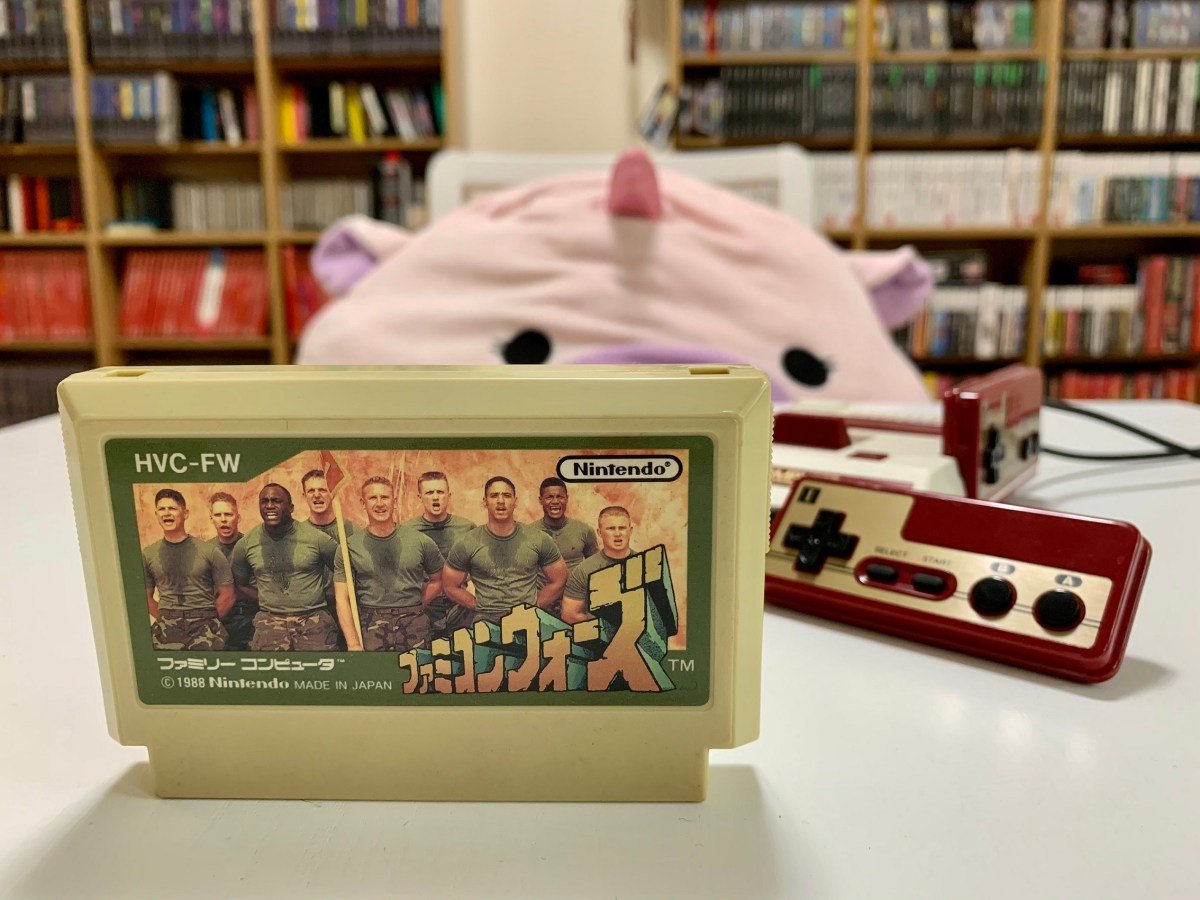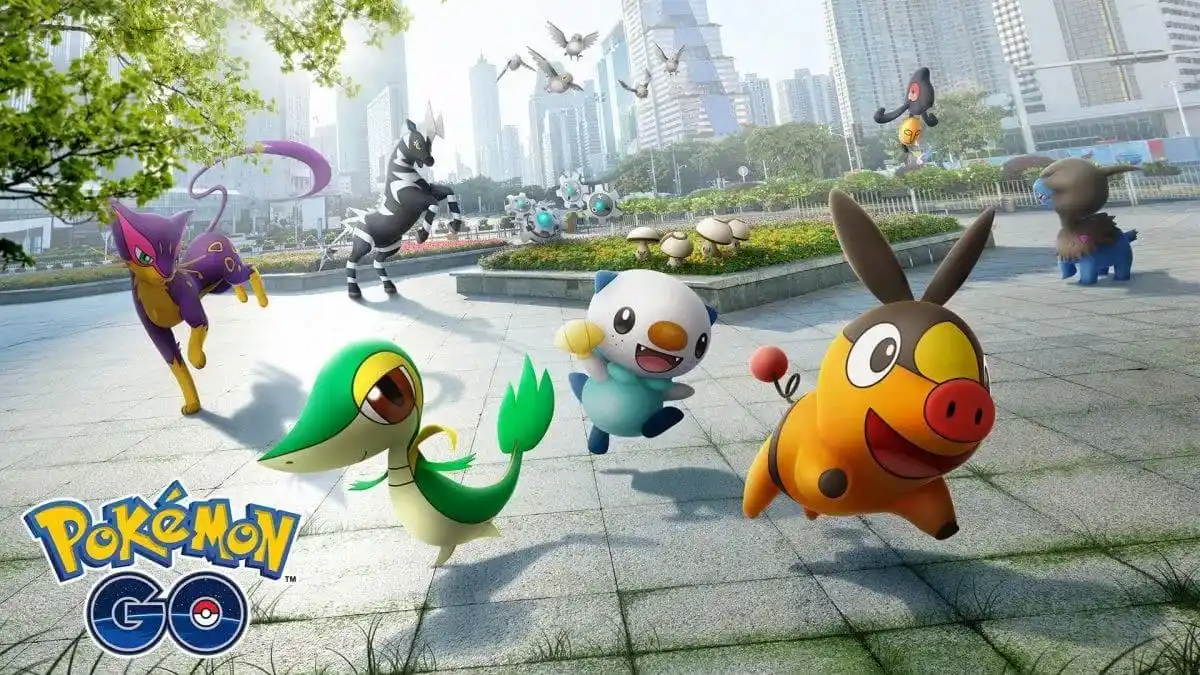Sweaty men not included
I’ve been eagerly anticipating the release of Advance Wars 1+2 Re-boot Camp since its announcement. I’ve loved the series since I first played it on Game Boy Advance back in 2001. At the time, I had no idea that the games date back to the Famicom, and, for some reason, Advance Wars was just the first we got in North America. When I started collecting for the Famicom, it was one of the first games I looked for.
I wound up with Daisenryaku due to a strangely worded listing. The collector’s market was kind of weird back then.
I did eventually land what I was looking for. I had the privilege of trying it out with a friend of mine who also loves the series. As it turned out, there was some to be had. Nothing that hasn’t been antiquated by later games in the series, but fun nonetheless.

I want to talk about the box art to Famicom Wars because it’s one of the strangest I’ve ever seen. Forget about bearded fellows playing the banjo or horrible Sega Master System covers, Famicom Wars decided to promote itself using a row of sweaty boot camp trainees screaming at the camera. I honestly cannot fathom the discussions that went on around the use of it. Was Nintendo happy? Was the development team happy? Did the company that put this together ever find work again?
Those sweaty men don’t feature within the game. Instead, it’s the same bizarre light-hearted approach to war that we’re used to from the series. Okay, there’s no dialogue, so we don’t get COs patting each other on the back for the great battle that resulted in untold collateral damage and lives lots, but it’s still presented in an off-puttingly goofy fashion. Forget the horrors of war, just focus on the strategy.
Perhaps predictably, Famicom Wars is the formula distilled down to its purest elements. You’ve got the Red Star and Blue Moon armies. They’re evenly matched, and the COs are just generic army dudes. However, the main gameplay elements are all here. Grid-based, units with strengths and weaknesses, terrain that offers defensive cover, and capturing cities for a better daily income. If you know how to play Advance Wars, then you’re all set here. If you don’t, then just know it’s a simple take on the tactical war genre.

Many of the units that would be carried through the Game Boy Wars games and into Advance Wars existed here. Tanks and artillery in light and heavy flavors, infantry, bazooka infantry, battleships, and bombers. The big difference is that APCs and supply trucks are separate units. The supply trucks deserve special mention because they’re very unintuitive. When in a group of units, they always resupply the unit closer to the enemy. They would also sometimes just refuse to resupply for reasons I couldn’t discern. Maybe if I had the instruction manual.
One feature that I wished was carried over to later games in the series is the persistent campaign. There’s no story mode, but there’s a series of islands to be taken over. If you’re playing a 2-player campaign, then you’re essentially fighting to see who can capture the most islands. There’s a battery backup in the cartridge, which means that you can keep the campaign going over multiple play sessions. Unfortunately, the battery in my cartridge died. Have you ever tried opening a Nintendo-type Famicom cartridge? There are no screws, just plastic clips. Taking them apart without breaking those clips is a harrowing experience.

There are some drawbacks. The AI takes all the time to make its moves as a human player would, but without the conversation and smack talk. It’s not bad in early maps where there aren’t many units fielded, but in the bigger maps, I would literally walk away from the game and come back after a few minutes to find that they were still thinking about moving units. This was a problem with a lot of early turn-based strategy games. SD Gundam World, for example, or even Game Boy Wars.
It’s also a rather unbalanced game. I recall a match where I was being trampled by a friend of mine in 1v1. I was on the ropes, but I turned the whole battle around because I was the first one to drop the money on a battleship. Those beasts hit anything; land, sea, air. They’re the ultimate artillery and I can’t think of a single strategy that could defeat a blockade of those things. Of course, I’m no, uh… Captain Picard. I’m drawing a blank here on actual military leaders.
I had to bring up that time I won because he was always better than me at strategy games.

It’s somewhat important to note that, while both games are similar, Famicom Wars predated Fire Emblem: Shadow Dragon and the Blade of Light by about two years. Both were designed by Intelligent Systems, or perhaps more accurately programmed by Toru Narihiro. While Fire Emblem is a much more advanced game with its narrative, persistent unit death, and RPG elements, there’s a lot of Famicom Wars DNA in there, and it’s unlikely it would exist without its predecessor.
It’s easy to say that Famicom Wars was made obsolete by later games in the series, but I think it’s more important to appreciate how fun it still is. Even back in 1988, the foundation of the series was pretty strong. I just wish we got it over here.
Nintendo did recently go to the effort of localizing the original Famicom version of Fire Emblem: Shadow Dragon and the Blade of Light, though they only offered it for a limited amount of time and then, mystifyingly, pulled it from stores. However, they tend to have more respect for the Fire Emblem series since the western audience latched onto it and turned it into a million-seller. Maybe if Advance Wars 1+2 Re-boot Camp succeeds, we’ll finally see a localization. On the other hand, you could just use the map editor to remake all the Famicom Wars maps, so what do I know?
As for what’s there now, if you’re brave, you can poke around with the Japanese menus and try to figure things out. Otherwise, you need to know the language. There’s no story, but there are a lot of stats and unit types. Luckily, there is a fan translation available. Maybe check it out if you’d like to see where this series spawned.
Check out previous Famicom Fridays right here.






Published: May 6, 2022 04:00 pm